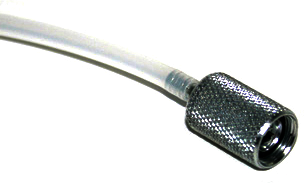-
myLab
-
Services
-
- Acid Number
- Analytical Ferrography
- Base Number: ASTM D2896 vs. D4739
- Crackle Test: Monitoring Water in Used Oil
- Demulsibility
- FTIR Direct Trend Methodology
- Fuel Distillation (ASTM D86)
- ISO Particle Count
- Karl Fischer Water Titration
- Optical Particle Classification (OPC)
- Remaining Useful Life Evaluation Routine (RULER)
- SEM-EDS Wear Debris Analysis
- Total Magnetic Iron (TMI)
- Varnish Potential
-
-
Sampling
-
- Coolant Sampling Procedures
- Grease Sampling Procedures
- Oil Sampling Basics (Short Course)
- Oil Sampling Procedures (Video)
- Oil Sampling Procedures: Good-Better-Best (PDF)
- Sample Collection Basics
- Sampling Oil Using a Drain Plug
- Sampling Oil Using a Pushbutton or KST-Series Valve
- Sampling Oil Using a Sample Pump
- Sampling Oil Using Thread-On Probe Style Valves
- Used Oil Filter Sampling
- Sampling from Filter Carts
-
-
Data Interpretation
-
- Analytical Ferrography Reporting
- Basic Testing Interpretation (PDF)
- Common Wear Mechanisms (PDF)
- DEF Specifications: ISO 22241
- Oil Cleanliness: ISO vs. NAS
- Potential Source of Spectrometry Metals (PDF)
- Reading the OA Report (PDF)
- Understanding ISO Particle Counts (PDF)
- Wear Metal Origins (PDF)
- Comparison: Wear Debris Analysis Technologies
- DEF Testing: Data interpretation
- Why Diesel Fuel Dilution is Bad for Your Engine
-
- Data Interpretation Process (Video)
- Data Interpretation: Compressors (Video)
- Data Interpretation: Diesel Engines (Video)
- Data Interpretation: Grease Analysis for Wind Turbines (VIDEO)
- Data Interpretation: Hydraulics (Video)
- Data Interpretation: Natural Gas Engines (Video)
- Data Interpretation: Oil Analysis for Wind Turbines (Video)
- Data Interpretation: Reducers (Video)
- Data Interpretation: Turbines (Video)
-
-
Whitepapers
-
Success Stories
-
FAQ
-
Release Notes
< All Topics
Print
L-Series Sample Valve
PostedJanuary 10, 2022
UpdatedJuly 22, 2025
ByFluid Life
For Low or Non-Pressurized Applications
The L Series can be used for low or no pressure, high viscosity oil sampling (splash lubricated equipment and reservoirs). Samples can be taken on operating equipment up to 7x faster than when using the L-Series valve. Sample valves allow you to reduce the time needed to extract a sample, while gaining a more representative sample and avoiding external contamination for more accurate oil analysis trending.
Applications
Features
- High Flow design for easier, faster sampling of cold or heavy oils (i.e. Gear oils up to VG1500).
- Thread-on Sample Probe connects to common industry sample tubing and pump.
- Pitot Tube can be cut and bent in order to draw oil from the target, active oil zone.
- Rugged metal cap with backup seal.
- Valve has corrosion resistant zinc-nickel plating and stainless steel pitot tube.
- Extra compact valve.
- Flush face is easy to clean and helps to avoid contamination.
Specifications
- Sampling Pressure: 0-125 psi (0 – 0.86 MPa)
- Working Pressure: 1,000 psi (6.89 MPa)
- Seal Material Temperature Range: Viton -26C – 204C (-15F – 400F)
- Valve Material: Carbon steel with corrosion resistant zinc-nickel
- plating.
- Stainless Steel Pitot Tube
Standard Sample Probe
Compatible probe (CHK-SLF4) is required for valve operation.

Download PDF
Buy Online
Related Articles
Oil Sampling Procedures (PDF)
Webinar: Oil Sampling Procedures
Short Course: Oil Sampling Basics
Table of Contents

